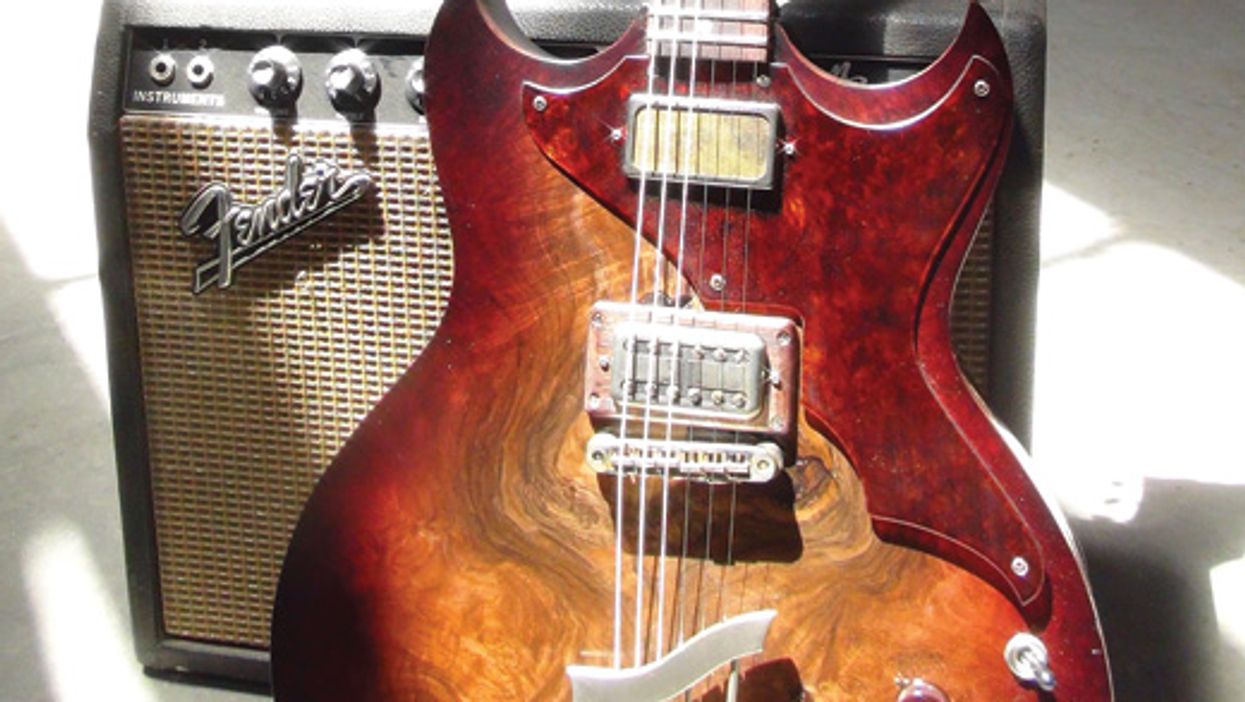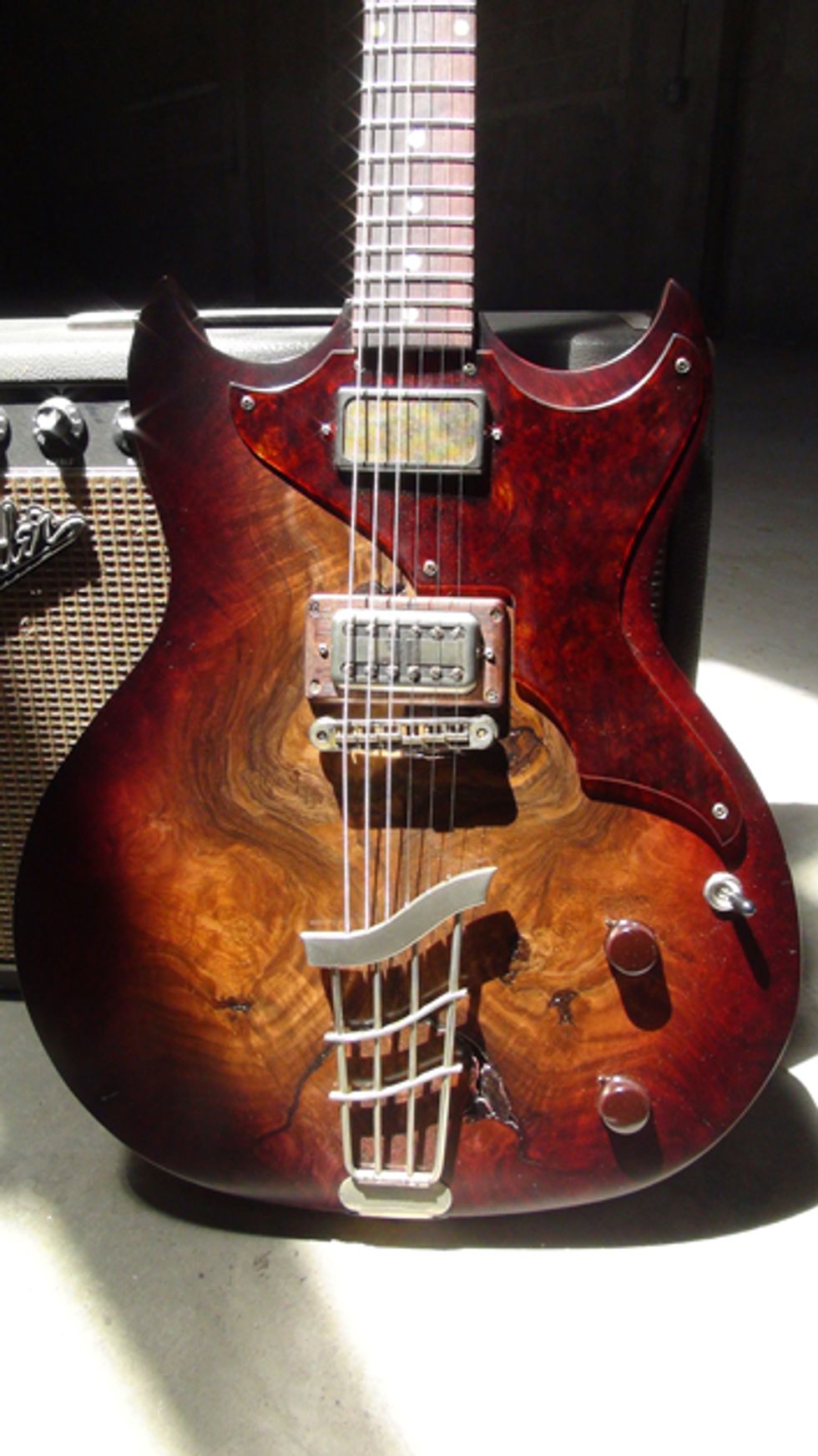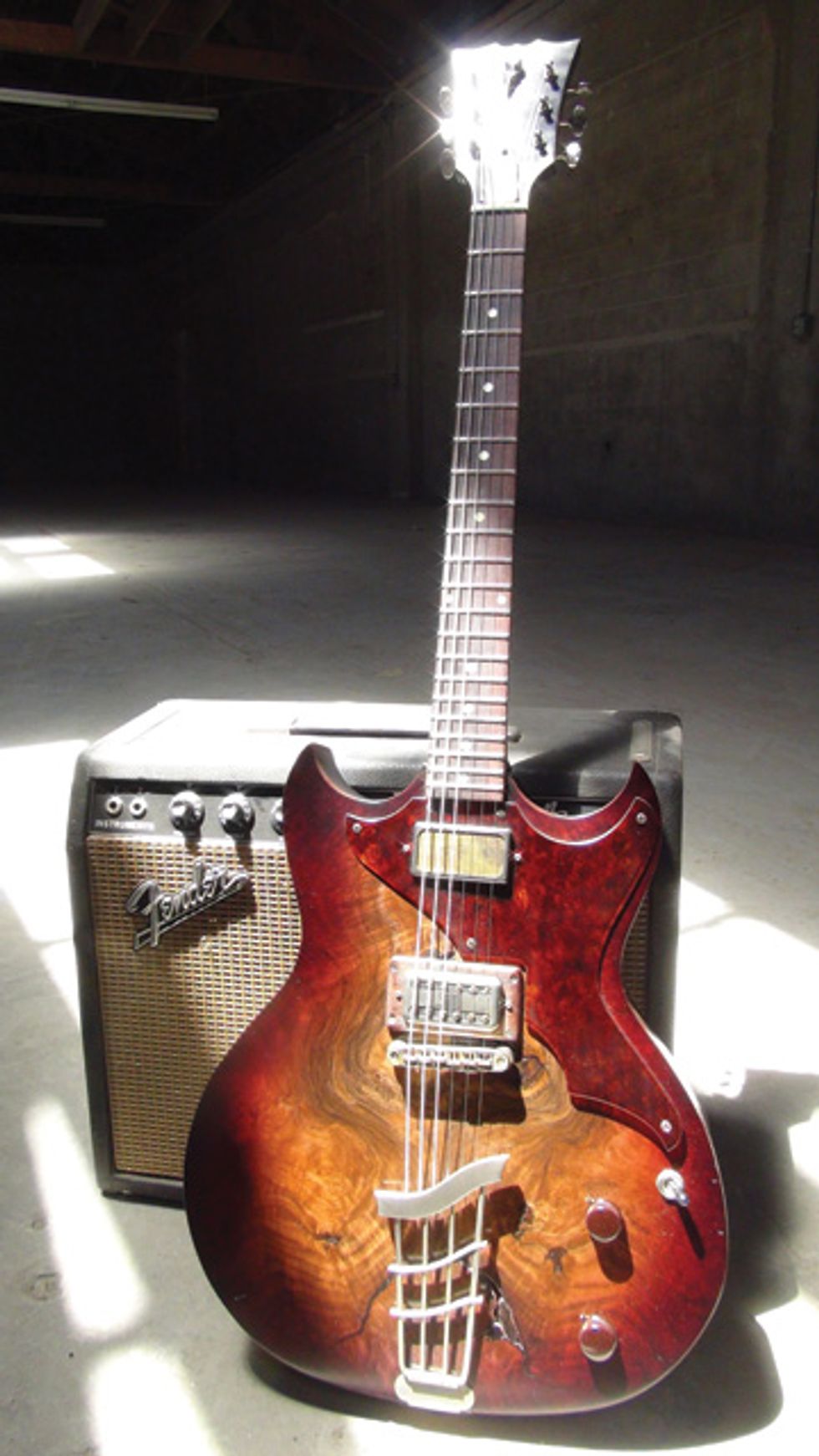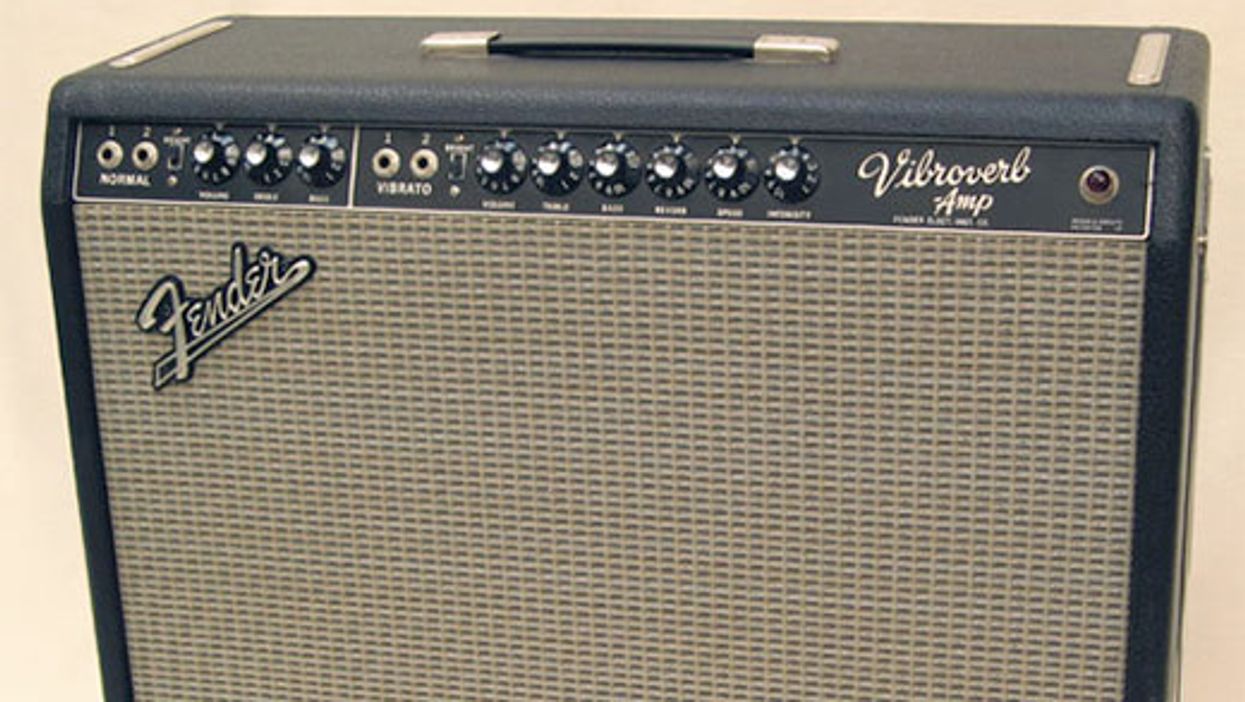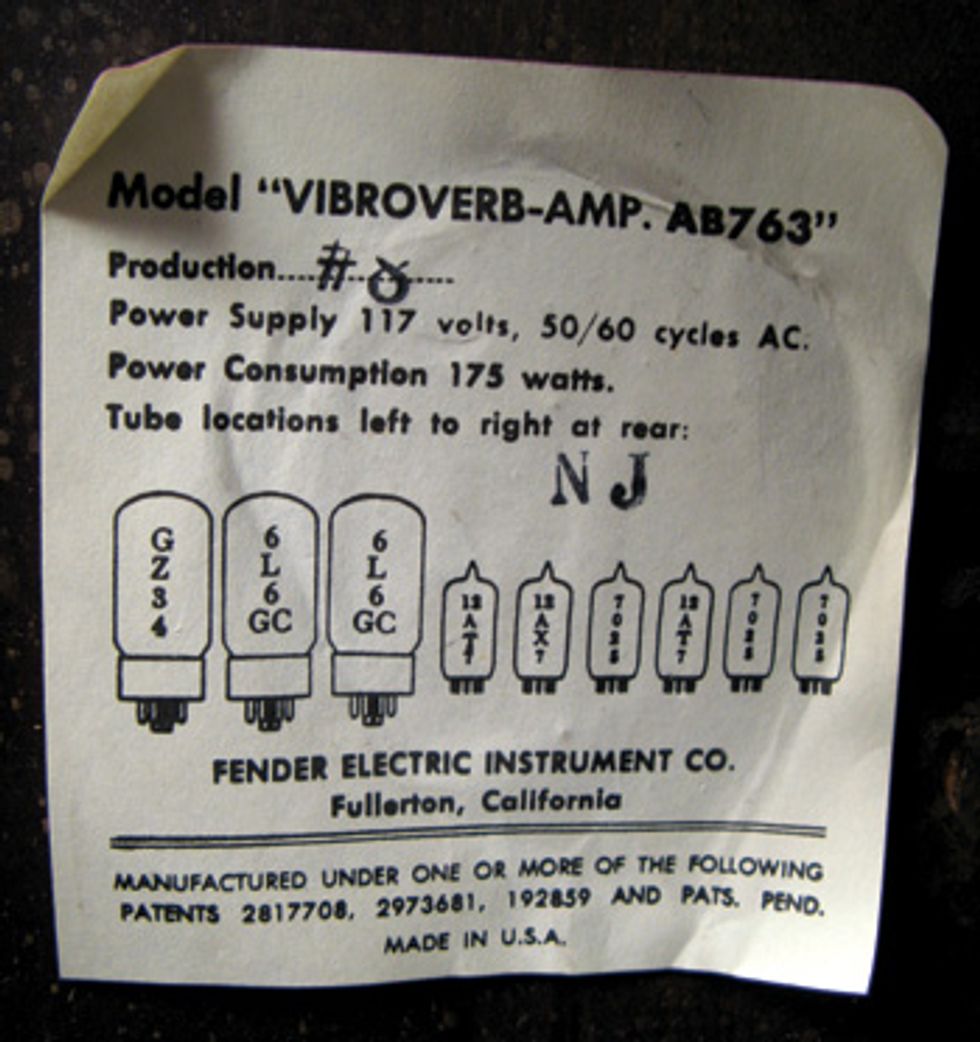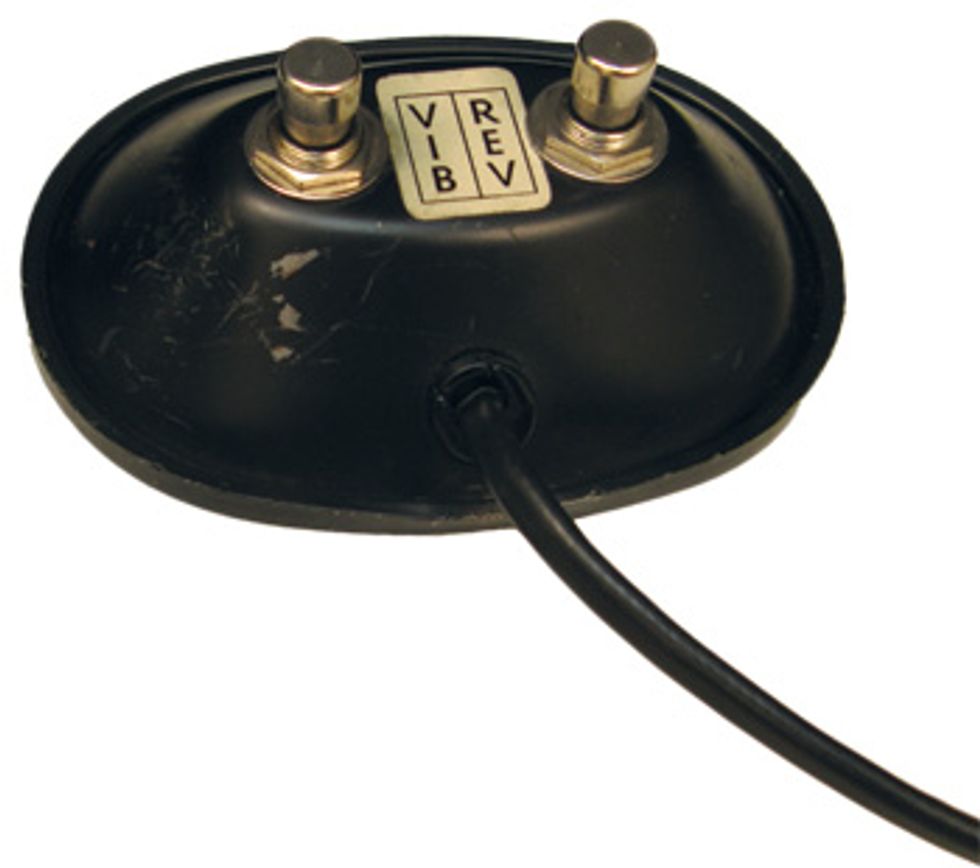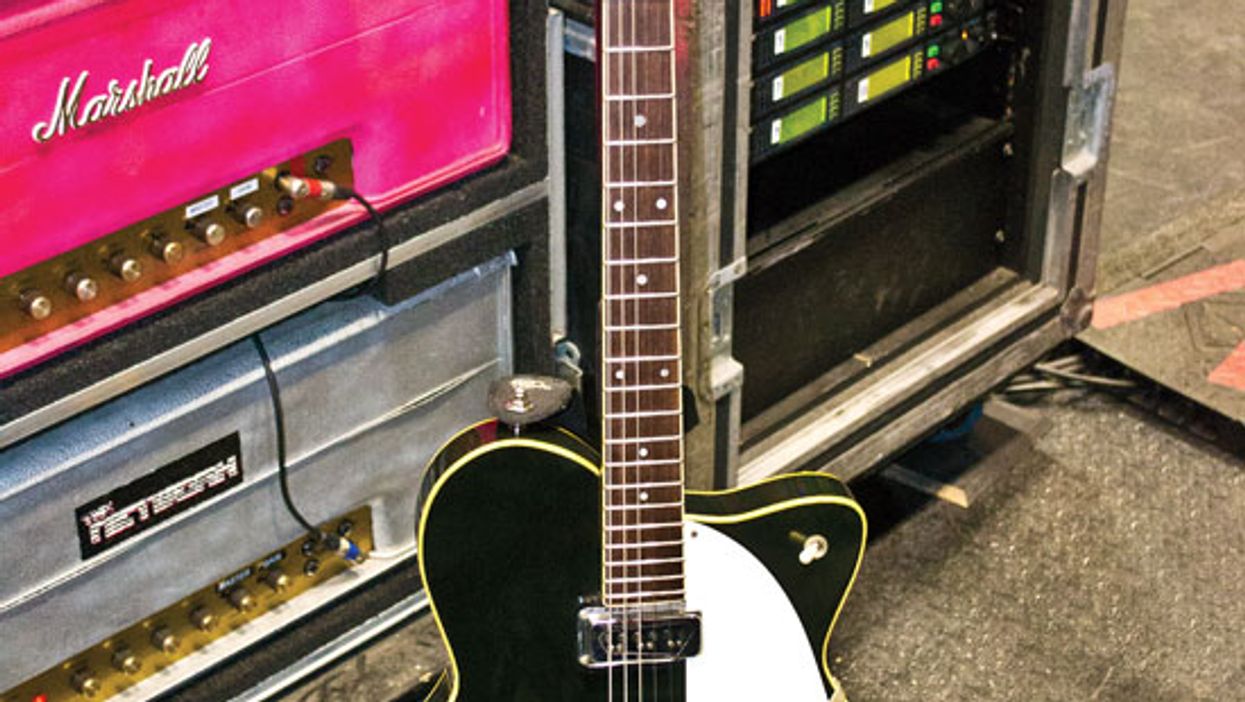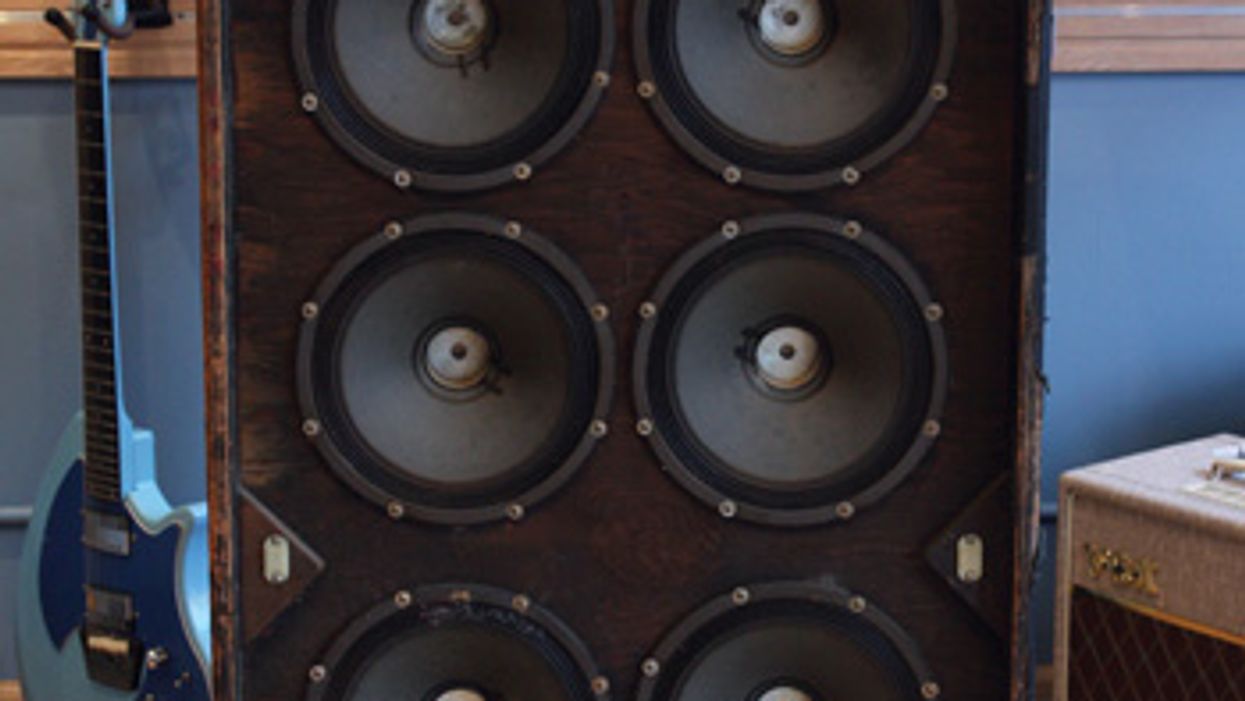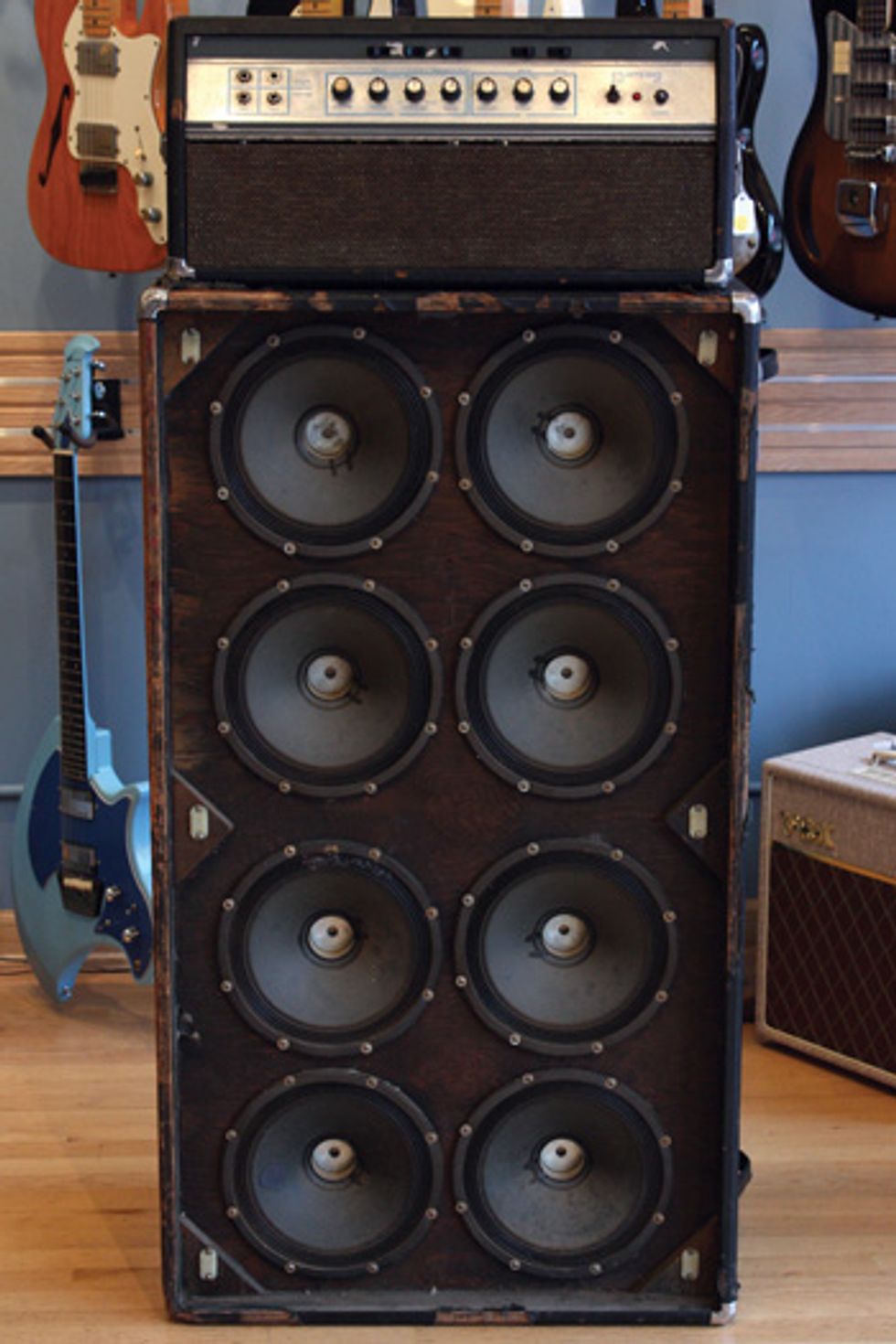When Led Zeppelin and Black Sabbath hit record store shelves and airwaves, many viewed heavy metal as a demonic vice corrupting the youth with its occult-based rhetoric packaged within slick, entrancingly melodic powerhouse rhythms. It was feared. It was abominable. Decades and PRMC Senate hearings later, the record burning protests and disdainful disposition towards metal have subsided, but W.A.S.P.’s guitarist Douglas Blair’s late ’70s Japanese Les Paul copy puts the danger back into dangerous when it comes to playing heavy music.
Dubbed the Blade II—Blair has another rip saw blade-equipped Japanese Les Paul-style guitar dubbed Blade I—it boasts a custom-engineered, gold-anodized aluminum rip saw blade that spins atop its face, with oversized, wave-shaped teeth. The blade turns clockwise or counterclockwise and is controlled by a bezel-mounted control switch. “It can clearly be seen shining and spinning from the back of the venue—and it doesn’t hurt to have six laser pointers mounted on the bridge illuminating my fingertips either [laughs],” says Blair.
Other custom appointments include a nut clamp, rear belly contour, bolted-in Gibson humbuckers, a 6-way pickup selector, and a removed heel. “The way I cut the heel away gives similar access found on a Washburn N4 with the Stephen’s Extended Cutaway neck joint, which improves the ease of playing above the 15th fret, right up to the 22nd,” says Blair. “I wouldn’t have been able to make the transition to a Les Paul-style guitar if this issue wasn’t addressed.” As for the six-on-a-side Jackson-esque headstock, Blair chalks the mod up to being a sign of the times. “When I did the change in the late ’80s, the left-handed, pointy headstock thing was cool. I’d regret not leaving the original three-by-three construction at times, but now I love the uniqueness of it—it complements the rest of my axe.”
This LP copy has a cherry red finish over a book-matched flame maple veneer that covers a chunky, solid mahogany body—almost 3.5" thick in its center. The large mahogany neck has a scalloped rosewood fretboard. While the looks may first draw W.A.S.P. fans’ eyes, Blair contends the guitar quickly garners the attention of their ears because of its “soundman-pleasing tone.” “This guitar is the equivalent of gluing a couple of sweet mahogany SGs together,” adds Blair. “It is thick, warm, and punchy. No maple anywhere, just mahogany— probably old, high-quality stock—and rosewood on the fretboard make a wonderful tone to build a crazy guitar around.”
And when it comes to the playing around a moving blade, Blair tries to keep things as controlled as possible. “If the blade spins clockwise—which I avoid—it will steal the pick from you, or worse, take a nip at your fingers. Other than the TSA inspectors’ facial expressions, there have been no real problems with the blade, though the airlines have busted my headstock twice this year already. When the blade is running, I pay the utmost attention— and so do the stage security guards, because sometimes I try to give them a haircut [laughs]!”
A special thanks to Douglas Blair of W.A.S.P. for the opportunity to feature this fine instrument and its story.




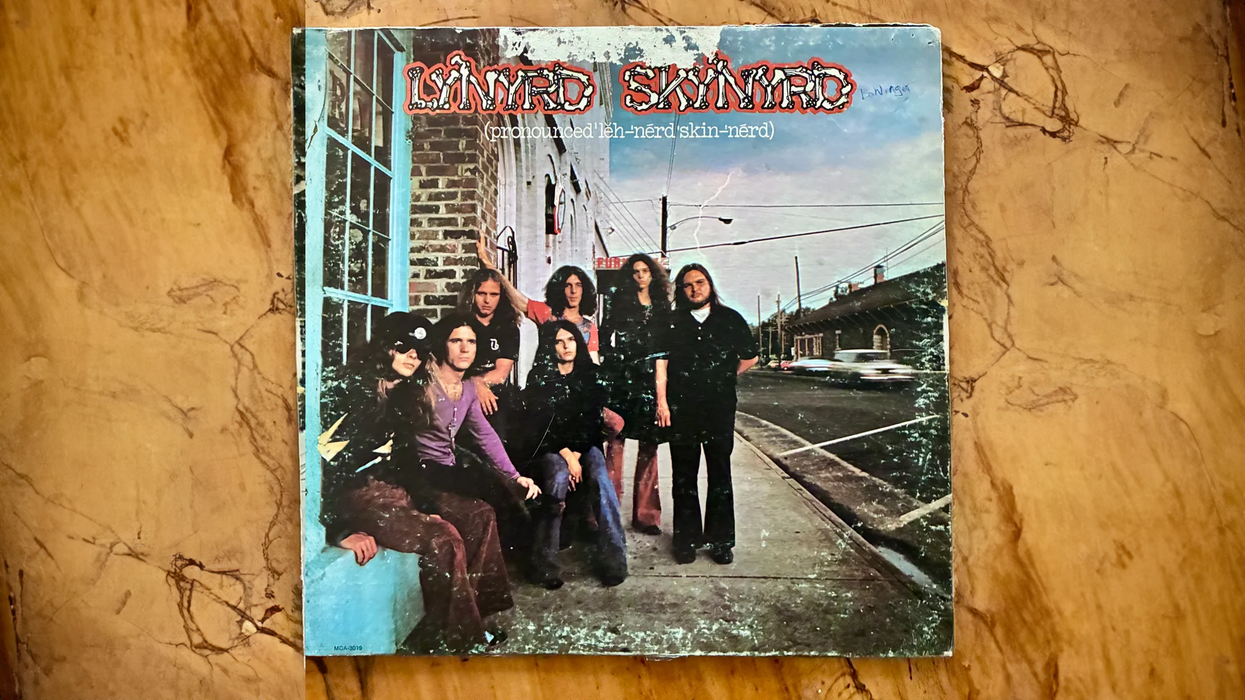

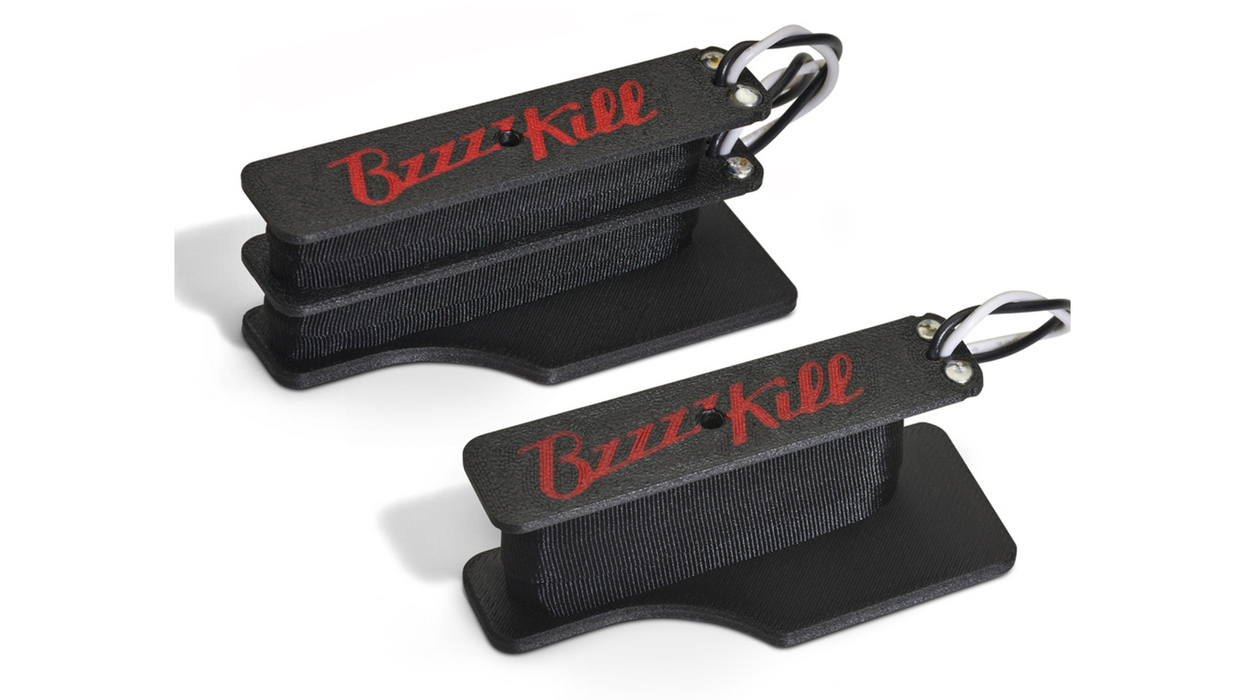
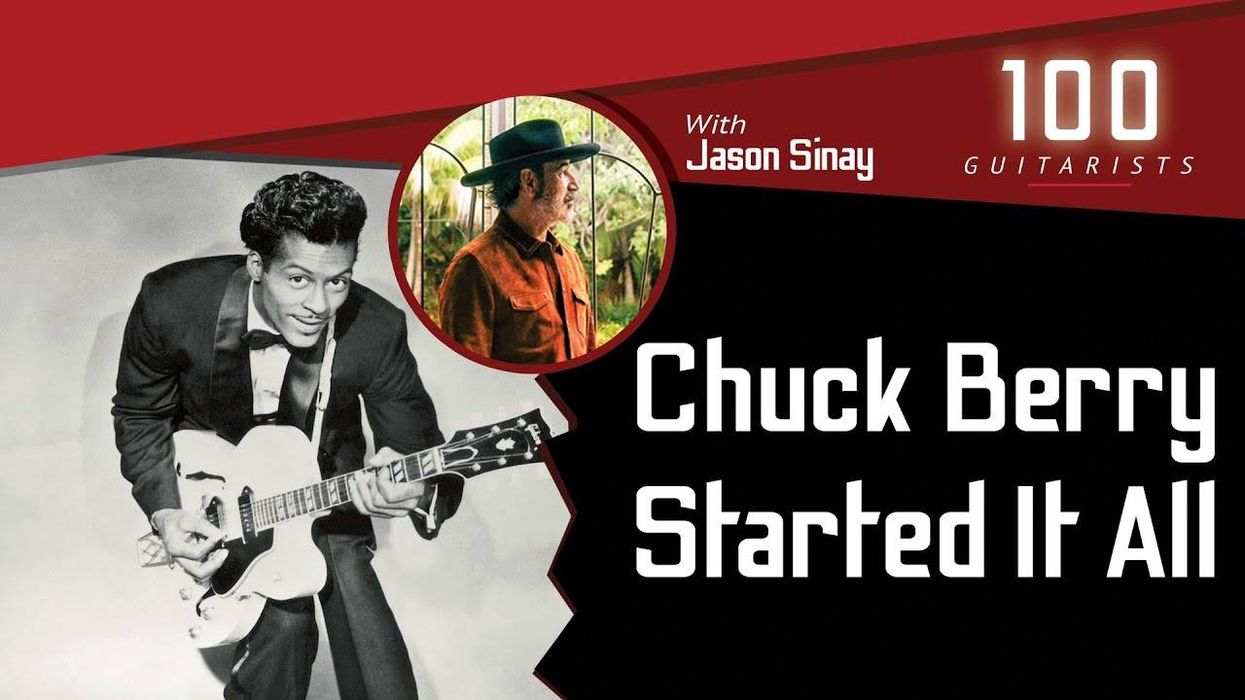
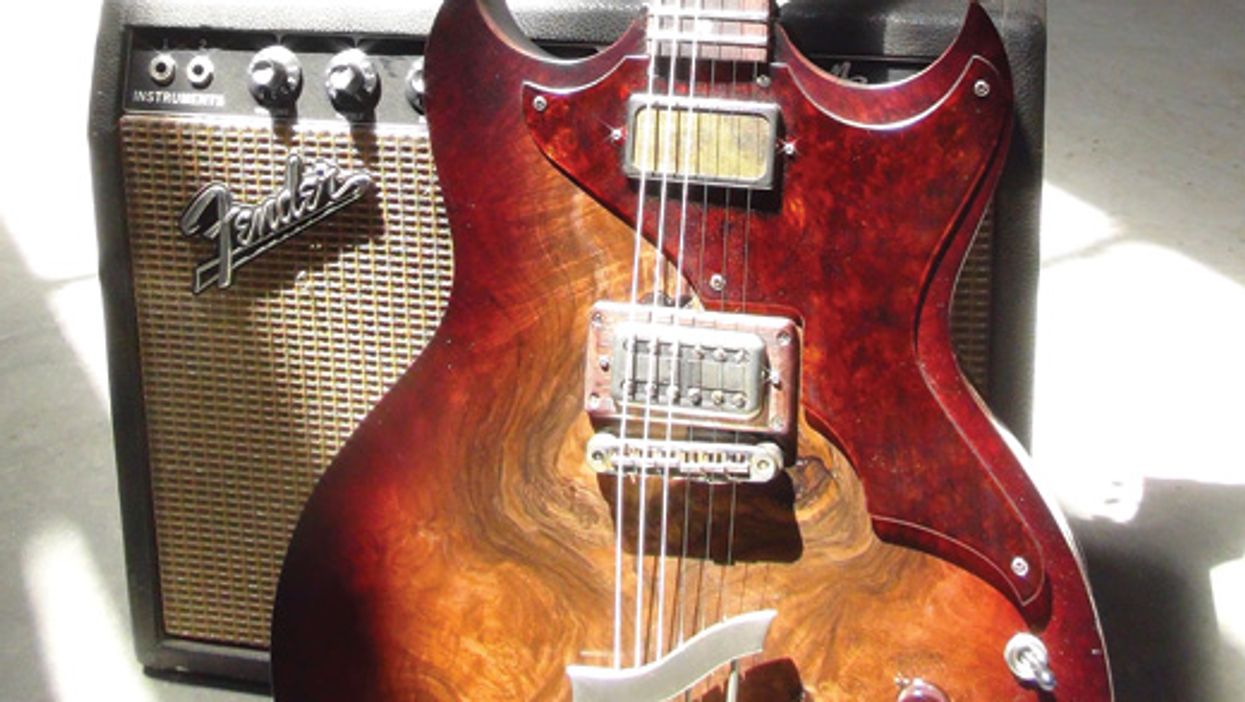



![Rig Rundown: Russian Circles’ Mike Sullivan [2025]](https://www.premierguitar.com/media-library/youtube.jpg?id=62303631&width=1245&height=700&quality=70&coordinates=0%2C0%2C0%2C0)


